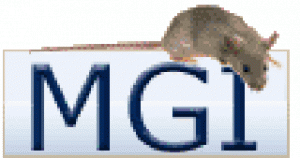Status:
Platform:
Implement Technique:
Species:
The laboratory mouse is the premier animal model for studying human biology because all life stages can be accessed experimentally, a completely sequenced reference genome is publicly available and there exists a myriad of genomic tools for comparative and experimental research. In the current era of genome scale, data-driven biomedical research, the integration of genetic, genomic and biological data are essential for realizing the full potential of the mouse as an experimental model. The Mouse Genome Database (MGD; http://www.informatics.jax.org), the community model organism database for the laboratory mouse, is designed to facilitate the use of the laboratory mouse as a model system for understanding human biology and disease. To achieve this goal, MGD integrates genetic and genomic data related to the functional and phenotypic characterization of mouse genes and alleles and serves as a comprehensive catalog for mouse models of human disease. Recent enhancements to MGD include the addition of human ortholog details to mouse Gene Detail pages, the inclusion of microRNA knockouts to MGD's catalog of alleles and phenotypes, the addition of video clips to phenotype images, providing access to genotype and phenotype data associated with quantitative trait loci (QTL) and improvements to the layout and display of Gene Ontology annotations.[1]
The Mouse Genome Database (MGD, http://www.informatics.jax.org) serves the international biomedical research community as the central resource for integrated genomic, genetic and biological data on the laboratory mouse. To facilitate use of mouse as a model in translational studies, MGD maintains a core of high-quality curated data and integrates experimentally and computationally generated data sets. MGD maintains a unified catalog of genes and genome features, including functional RNAs, QTL and phenotypic loci. MGD curates and provides functional and phenotype annotations for mouse genes using the Gene Ontology and Mammalian Phenotype Ontology. MGD integrates phenotype data and associates mouse genotypes to human diseases, providing critical mouse-human relationships and access to repositories holding mouse models. MGD is the authoritative source of nomenclature for genes, genome features, alleles and strains following guidelines of the International Committee on Standardized Genetic Nomenclature for Mice. A new addition to MGD, the Human-Mouse: Disease Connection, allows users to explore gene-phenotype-disease relationships between human and mouse. MGD has also updated search paradigms for phenotypic allele attributes, incorporated incidental mutation data, added a module for display and exploration of genes and microRNA interactions and adopted the JBrowse genome browser. MGD resources are freely available to the scientific community.[2]
We report here a semi-automated process by which mouse genome feature predictions and curated annotations (i.e., genes, pseudogenes, functional RNAs, etc.) from Ensembl, NCBI and Vertebrate Genome Annotation database (Vega) are reconciled with the genome features in the Mouse Genome Informatics (MGI) database (http://www.informatics.jax.org) into a comprehensive and non-redundant catalog. Our gene unification method employs an algorithm (fjoin--feature join) for efficient detection of genome coordinate overlaps among features represented in two annotation data sets. Following the analysis with fjoin, genome features are binned into six possible categories (1:1, 1:0, 0:1, 1:n, n:1, n:m) based on coordinate overlaps. These categories are subsequently prioritized for assessment of annotation equivalencies and differences. The version of the unified catalog reported here contains more than 59,000 entries, including 22,599 protein-coding coding genes, 12,455 pseudogenes, and 24,007 other feature types (e.g., microRNAs, lincRNAs, etc.). More than 23,000 of the entries in the MGI gene catalog have equivalent gene models in the annotation files obtained from NCBI, Vega, and Ensembl. 12,719 of the features are unique to NCBI relative to Ensembl/Vega; 11,957 are unique to Ensembl/Vega relative to NCBI, and 3095 are unique to MGI. More than 4000 genome features fall into categories that require manual inspection to resolve structural differences in the gene models from different annotation sources. Using the MGI unified gene catalog, researchers can easily generate a comprehensive report of mouse genome features from a single source and compare the details of gene and transcript structure using MGI's mouse genome browser.[3]
References
- The mouse genome database: genotypes, phenotypes, and models of human disease.,
, Nucleic Acids Res, 2013 Jan, Volume 41, Issue Database issue, p.D885-91, (2013)
- The Mouse Genome Database (MGD): facilitating mouse as a model for human biology and disease.,
, Nucleic Acids Res, 2015 Jan, Volume 43, Issue Database issue, p.D726-36, (2015)
- A unified gene catalog for the laboratory mouse reference genome.,
, Mamm Genome, 2015 Aug, Volume 26, Issue 7-8, p.295-304, (2015)







